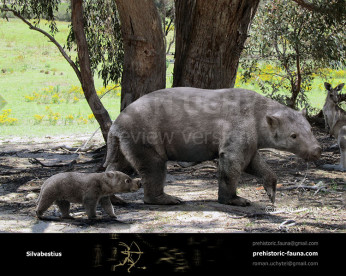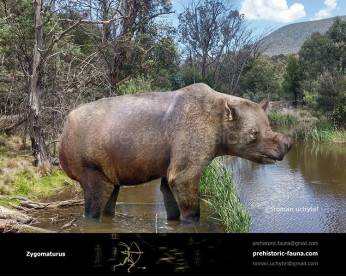Palorchestes azael
8282Palorchestes (†Palorchestes Owen, 1873)
Infraclass: Marsupiala
Suborder: Diprotodontia
Family: †Palorchestidae
Temporal range: The genus was endemic to Australia, living from the Pleistocene epoch (40,000 – 46,000 years ago)
Dimensions: length - 2.3 m, weight - 250 kg
A typical representative: Palorchestes azael Flannery, 1983
Palorchestes – a genus of marsupial animals that lived in Australia and went extinct in Pleistocene, approximately 46 thousand years ago, after the arrival of man to Australia.
Palorchestes was the size of a horse and reached one meter in height. Its snout ended in a small proboscis for which it was nicknamed ‘marsupial tapir’. In fact, palorchestes was a rather close relative of wombat and koala, with which it is united in one order Diprotodontia, i.e. animals with two incisors.
Palorchestes’ body was massive, with very strong front legs that bore mighty claws. The habits of these herbivores were probably similar to those of tapirs on one hand and of halicotaeria and terrestrial sloths on the other. With its clawed limbs it could get food by bending tree branches and digging out roots, as well as protect itself from predators.
To date, two species of Palorchestes are known: Palorchestes azael and Palorchestes painei.
Palorchestes (†Palorchestes Owen, 1873)
Infraclass: Marsupiala
Suborder: Diprotodontia
Family: †Palorchestidae
Temporal range: The genus was endemic to Australia, living from the Pleistocene epoch (40,000 – 46,000 years ago)
Dimensions: length - 2.3 m, weight - 250 kg
A typical representative: Palorchestes azael Flannery, 1983
Palorchestes – a genus of marsupial animals that lived in Australia and went extinct in Pleistocene, approximately 46 thousand years ago, after the arrival of man to Australia.
Palorchestes was the size of a horse and reached one meter in height. Its snout ended in a small proboscis for which it was nicknamed ‘marsupial tapir’. In fact, palorchestes was a rather close relative of wombat and koala, with which it is united in one order Diprotodontia, i.e. animals with two incisors.
Palorchestes’ body was massive, with very strong front legs that bore mighty claws. The habits of these herbivores were probably similar to those of tapirs on one hand and of halicotaeria and terrestrial sloths on the other. With its clawed limbs it could get food by bending tree branches and digging out roots, as well as protect itself from predators.
To date, two species of Palorchestes are known: Palorchestes azael and Palorchestes painei.

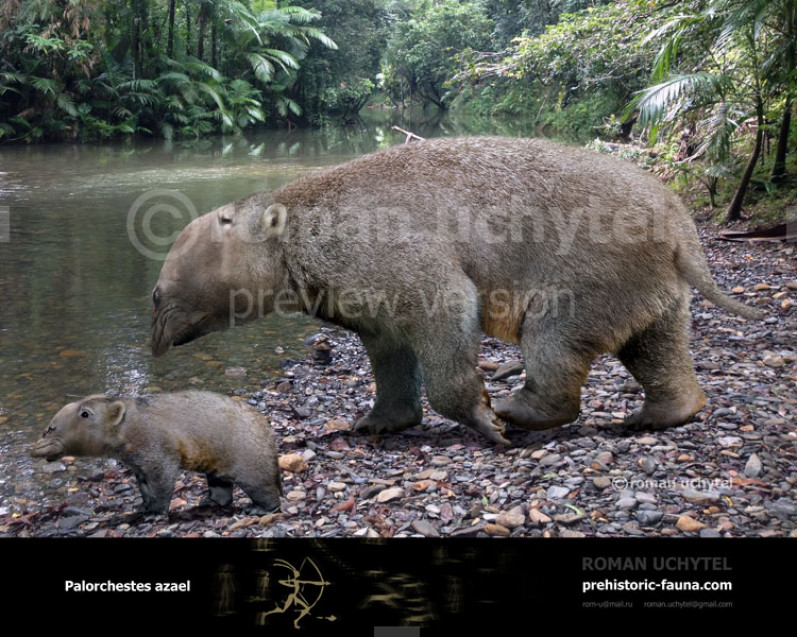
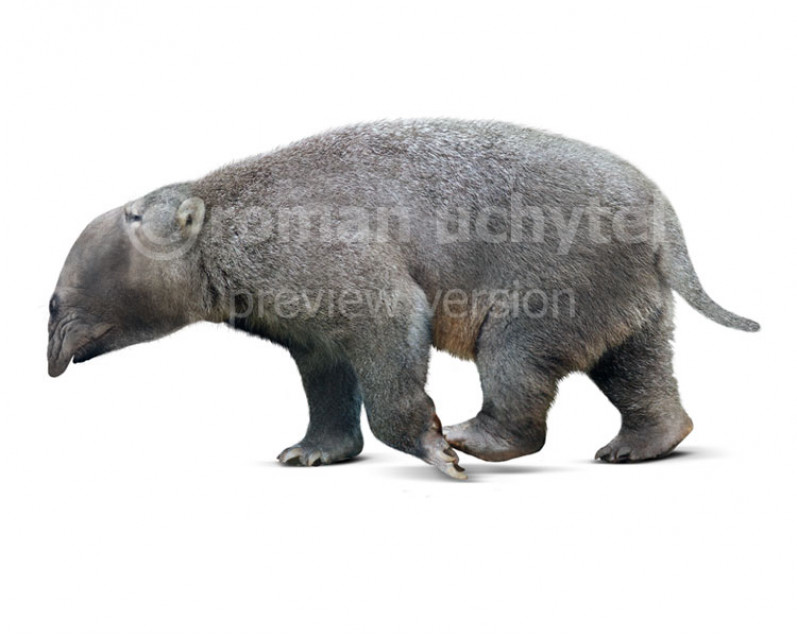
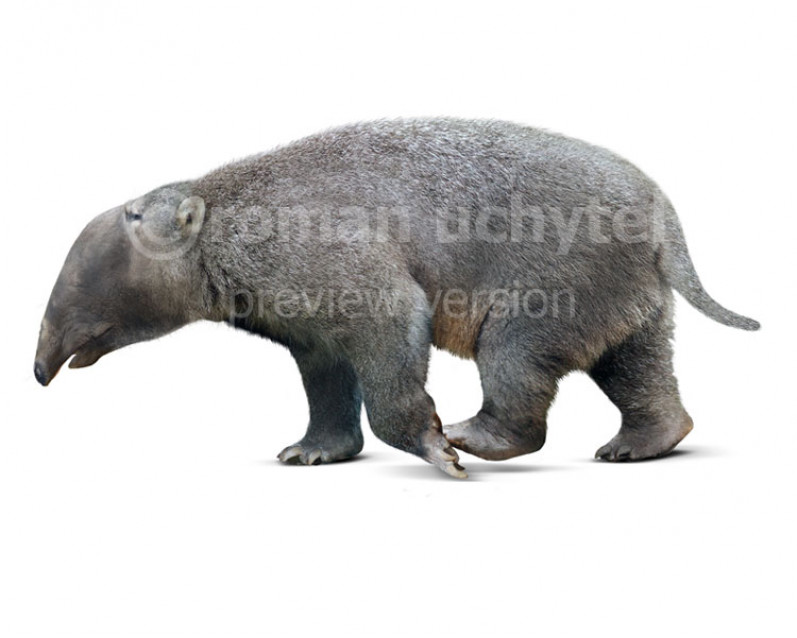
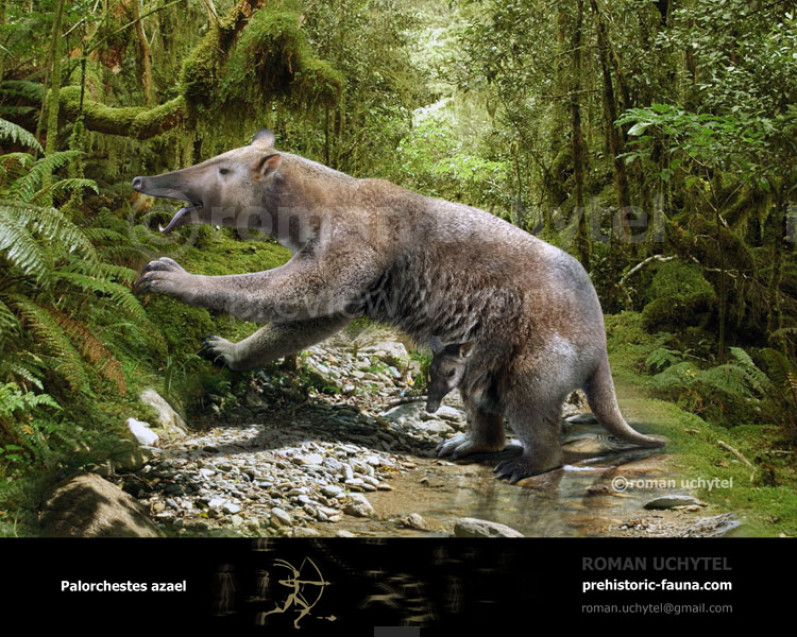
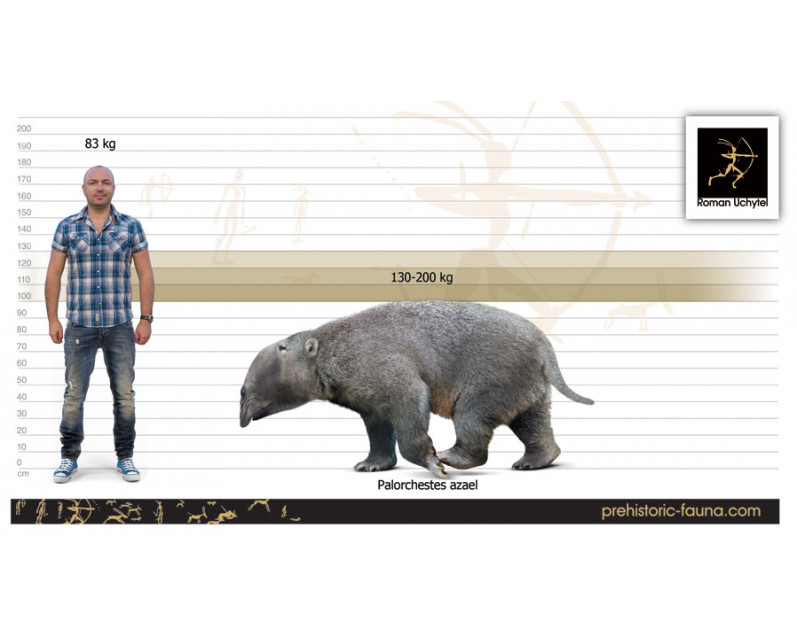





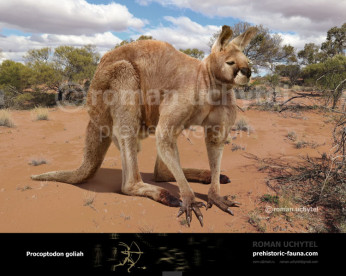
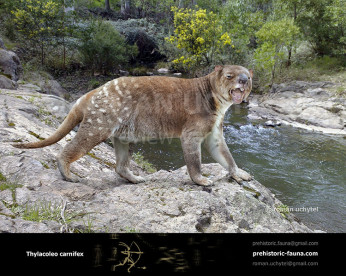
-346x277.jpg)
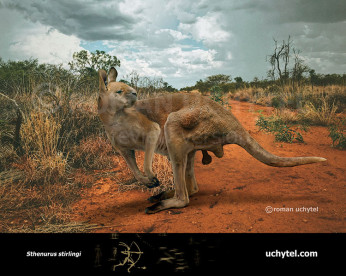
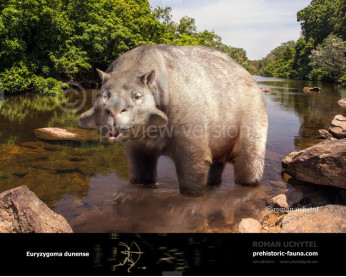
-346x277.jpg)
